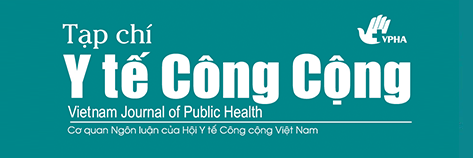Vai trò của methamphetamine dạng tinh thể trong các mối quan hệ xã hội của phụ nữ mại dâm tại Hà Nội (The role of crystal methamphetamine in social relationships of female sex workers in Hanoi)
Tóm tắt
Xu hướng sử dụng Methamphetamine dạng tinh thể – thường được gọi là đá trong nhóm phụ nữ mại dâm (PNMD) tại Hà Nội là phổ biến, tỷ lệ này là 50,6% tại một số địa bàn Hà nội vào năm 2012. Bài báo phân tích vai trò của sử dụng đá trong các mối quan hệ xã hội của PNMD tại Hà Nội. Nghiên cứu sử dụng thiết kế định tính. Có 50 PNMD, 3 bạn tình của PNMD, 4 khách hàng của PNMD và 2 bảo kê (tuổi từ 18-45 và có báo cáo đã từng sử dụng đá) được lựa chọn có chủ đích, để tham gia vào phỏng vấn sâu bán cấu trúc. Số liệu được phân tích theo chủ đề, sử dụng phần mềm NVIVO 8.0. Với quan niệm đá là loại ma túy “sành điệu”, “thời trang”, phần lớn PNMD trong nghiên cứu coi việc sử dụng là cách để tạo dựng vị trí và quan hệ xã hội trong mạng lưới phức tạp của họ. Đặc biệt, đá đóng vai trò là phương tiện kết nối PNMD với các mối quan hệ xã hội quan trọng khác trong đời sống và công việc mại dâm của họ đặc biệt là: quan hệ với PNMD khác, quan hệ với khách hàng, quan hệ với bạn tình thường xuyên, bảo kê... Những mối quan hệ này mang lại cho PNMD tình cảm, tiền bạc và môi trường làm việc an toàn – những nhu cầu xã hội chính đáng của PNMD. Để đổi lấy nhu cầu xã hội thiết yếu này, PNMD phải đối mặt với nhiều nguy cơ về sức khỏe do việc sử dụng đá và quan hệ tình dục không an toàn gây ra. Kết quả nghiên cứu cho thấy, các can thiệp cho nhóm PNMD sử dụng đá cần chú trọng tác động vào mạng lưới và động cơ sử dụng đá của họ trong mạng lưới đó.
English abstract:
Use of crystal methamphetamine (ice) among female sex workers (FSWs) in Hanoi is common, with 50.6% of FSWs using ice in some areas of Hanoi in 2012. This paper aimed to analyze the role of crystal methamphetamine use in the social relationships of FSWs in Hanoi. Qualitative design was employed; fifty-nine in-depth interviews were conducted with 50 FSWs, 3 sexual partners of FSWs, 4 clients of FSWs and 2 pimps. Participants (aged 18-45 and who reported using ice) were selected using purposive sampling. Thematic analysis was applied using NVIVO 8.0. Findings showed that a majority of sex workers believed that use of ice was considered “stylish” or “fashionable.” Ice was seen as a way to empower their social position within relationships and to connect to their complicated social networks, particularly with others FSWs, clients, pimps and regular partners. These relationships could help ensure that FSWs have a social connectedness, money and secure working environments – the essential social needs of FSWs. As a consequence, FSWs face several health risks, especially those resulting from unsafe sex and ice use. Based on these findings, interventions on FSWs who use ice need to take into account their social network and the reasons for ice use within their network.
Từ khóa
Toàn văn:
PDF (English)##submission.citations##
Tài liệu tiếng Việt
Ngô Đức Anh and S.A. Mccurdy, Đời sống của nữ mại dâm ở Việt Nam: Các phát hiện từ một nghiên cứu định tính. Tạp chí giới và sức khỏe tình dục, 2009. 21.
Hồ Thị Hiền, et al., Đánh giá thực trạng, kiến thức, thái độ, thực hành liên quan đến việc sử dụng ma túy tổng hợp dạng Amphetamine và hành vi nguy cơ nhiễm HIV trong nhóm phụ nữ mại dâm tại Hà Nội. 2012.
Vũ Đức Việt and Lê Minh Giang, Tiếp cận điền dã dân tộc học trong nghiên cứu HIV/AIDS chia sẻ của nghiên cứu viên trẻ tham gia dự án STAR. Nghiên cứu gia đình và giới, 2012. 22(6): p. 64 - 76.
Tài liệu tiếng Anh
Clatts MC and Sotheran JL, Challenges in research on drug and sexual risk practices of men who have sex with men: Applications of ethnography in HIV epidemiology and prevention. AIDS and Behaviour, 2000. 4(2): p. 167 - 179.
Couture, M.-C., et al., Correlates of amphetamine-type stimulant use and associations with HIV-related risks among young women engaged in sex work in Phnom Penh, Cambodia. Drug and Alcohol Dependence, 2011.
Couture, M., et al., High incidence of HIV&STI among young women working in the entertainment/sex industry in PhnomPenh, Cambodia. Sexually Transmitted Diseases, 2011. 38(1): p. 33-39.
Hopkins N, Peer group processes and adolescent health-related behaviour: more than ‘peer group pressure. Journal of Community and Applied Social Psychology, 1994. 4: p. 329-254.
Maher, L., et al., Amphetamine-type stimulant use and HIV/STI risk behaviour among young female sex workers in Phnom Penh, Cambodia. International Journal of Drug Policy, 2011. 22: p. 203-209.
Rhodes T et al, Risk factor associated with drug use: the importance of risk environment. Drugs: education, prevention and policy, 2003. 10(4): p. 303-329.
United Nations Office on Drugs and Crime (UNODC), Amphetamine-Type Stimulants in Viet Nam: Review of the availability, use and implications for health and security. 2012: Hanoi.
UNODC, Amphetamine-Type Stimulants in Viet Nam: Review of the availability, use and implications for health and security. 2012: Hanoi.
Urada AL et al, Condom negotiations among female sex workers in the Philippines: Environmental influences. PLoS ONE, 2012. 7(3).



